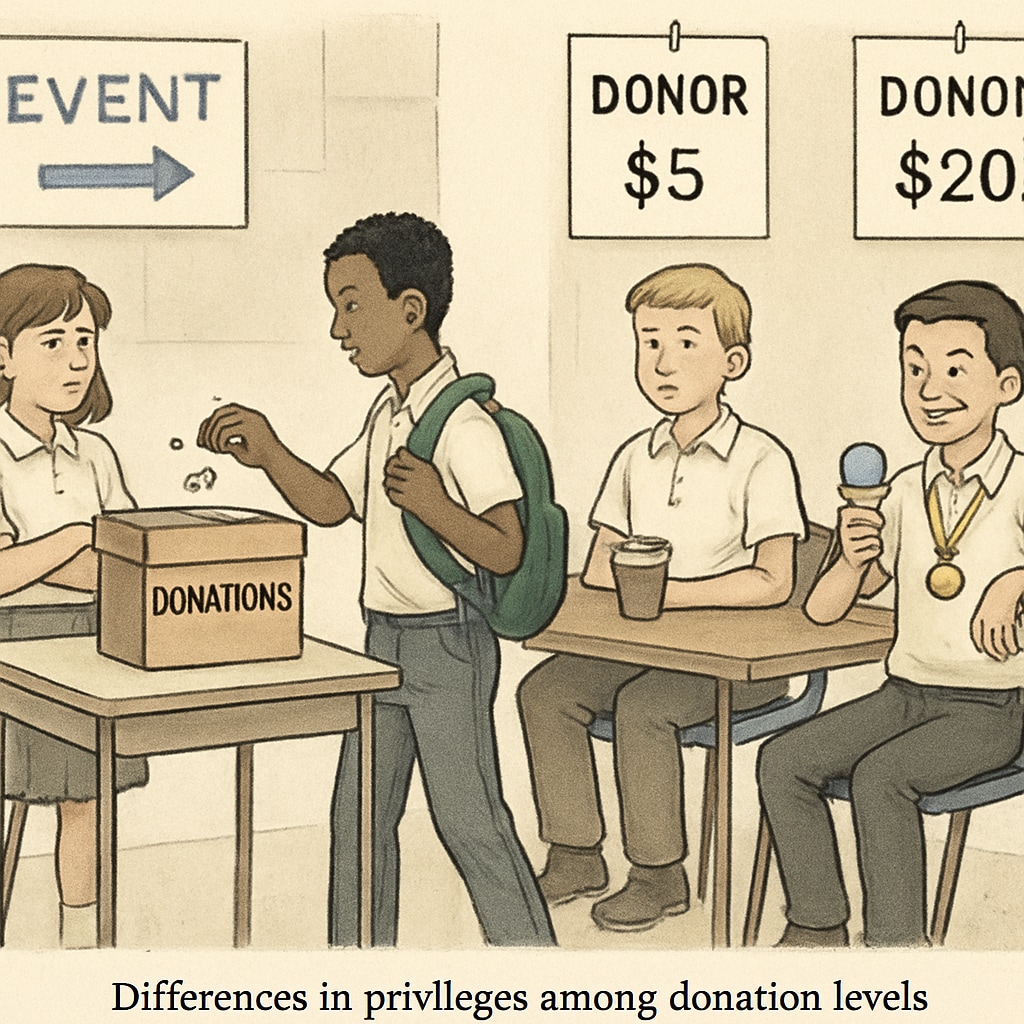School fundraising initiatives often aim to support education programs, facilities, or extracurricular activities. However, when schools adopt a fundraising model that establishes privilege tiers based on donation levels, they inadvertently introduce challenges to educational equity. This approach magnifies economic disparities among families and can lead to invisible discrimination, manifesting as psychological isolation and social exclusion for students from less affluent households.
Such practices might appear innovative and efficient for raising funds, yet they create a hidden cost: the erosion of equal opportunity in education. When privilege is tied to financial contributions, schools risk alienating families unable to contribute significant amounts and fostering a culture where wealth determines status.

How Privilege Tiers Impact Educational Equity
Privilege tiers in school fundraising often involve perks such as exclusive access to events, priority participation in extracurricular activities, or public recognition for higher donations. While these incentives may encourage contributions, they also create an environment where inequality becomes institutionalized. Students from wealthier families may enjoy advantages that indirectly affect their education, while others face limited access to opportunities.
For example, a school offering front-row seating at graduation ceremonies or invitations to exclusive donor events inadvertently sends a message that financial contributions define a family’s worth within the community. This practice can be emotionally damaging for students who feel their family’s financial situation places them at a disadvantage.
As a result, students internalize economic disparities, which can affect their confidence, relationships, and overall educational experience. Furthermore, this system risks perpetuating economic segregation, where students from differing financial backgrounds are less likely to interact or form meaningful connections.
The Psychological Toll of Economic Disparities
Beyond the tangible impacts of privilege tiers, the psychological consequences for students and families are significant. Children from less affluent households may experience feelings of shame, inadequacy, or resentment when their peers receive preferential treatment. This emotional toll can extend to their academic performance, as lower self-esteem often correlates with reduced engagement in school activities.
Additionally, the social dynamics within the school community may shift, creating invisible barriers between students based on their families’ financial contributions. For example, a student whose family cannot afford to donate may feel excluded from peer groups that participate in donor-exclusive events or activities. This type of social isolation can lead to long-term consequences for a child’s emotional well-being and sense of belonging.

Alternative Fundraising Models for Greater Inclusion
To address the inequities introduced by donation-based privilege tiers, schools can adopt more inclusive fundraising models. Schools might consider anonymous donations, where contributions are not publicly tied to specific benefits or recognition, thus fostering a sense of equality among families. Another approach is to offer communal rewards—such as upgraded facilities or school-wide events—that benefit all students equally, regardless of individual contributions.
Additionally, schools can focus on diversifying their fundraising strategies to include grant applications, partnerships with local businesses, or community events that encourage participation without emphasizing financial contributions. These methods promote inclusivity by reducing the emphasis on individual wealth and fostering collective support for the school’s mission.
Ultimately, schools must recognize that their fundraising strategies play a critical role in shaping the culture of the educational environment. By prioritizing equity and inclusion, schools can ensure that all students feel valued and supported, regardless of their family’s financial situation.
Conclusion: Balancing Fundraising Innovation with Equity
While donation-based privilege tiers may seem like an effective way to generate funds, they come at the cost of educational equity and social cohesion. Schools must be mindful of the unintended consequences of these practices and strive to create fundraising models that emphasize inclusivity, community, and equal opportunity.
By adopting fairer approaches, schools can avoid reinforcing economic disparities and foster an environment where all students have the chance to succeed, thrive, and feel connected to their peers. Education should be a space where privilege is tied to effort and learning—not financial contributions.
Readability guidance: The article provides clear sections with concise paragraphs, supported by examples and alternative solutions. Lists and images are used to enhance readability and visual engagement.


